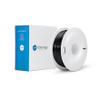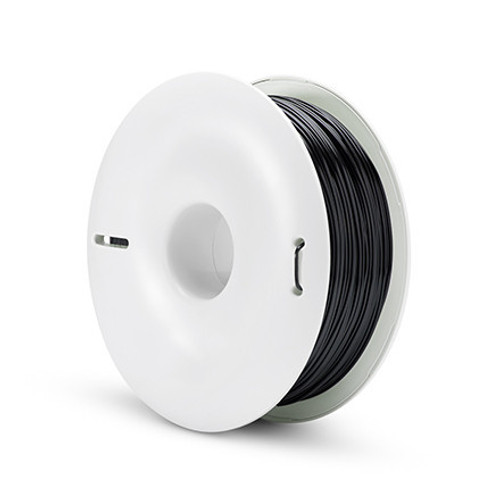Product Description
Fiberlogy ABS Black 2.85mm 3D Printing Filament
ABS 3D printing filament in Black
Product Information & Technical Details
| Item No: | abs-black-285-085 |
| Manufacturer No: | 5902560993998 |
| Manufacturer: | Fiberlogy |
| Content: | 850g |
| Diameter: | 2.85mm |
| Product Type: | ABS 3D Printing Filament |
| Filament Colour: | Black |
| Net Weight: | 850g |
Recommended processing temperature: 250 - 265 °C
Recommended heating temperature: 90-110 ° C
Description
ABS (Acrylonitrile Butadiene Styrene) is indeed a popular and versatile 3D printing filament known for its durability and a range of beneficial properties. Here are some key advantages and applications of ABS filament:
-
Durability: ABS prints are renowned for their hardness and high impact resistance. This makes them suitable for applications where the printed object may need to withstand rough handling or impacts without breaking or deforming.
-
Temperature Resistance: ABS has a high glass transition temperature, which means it can withstand relatively elevated temperatures without deforming. This property makes it suitable for applications where heat resistance is required.
-
Chemical Resistance: ABS is resistant to many chemicals, which makes it an excellent choice for applications where the printed object may encounter various chemicals or solvents.
-
Abrasion Resistance: ABS is also resistant to abrasion, making it suitable for parts that experience wear and tear over time.
-
Versatility: ABS is a versatile material that can be used for a wide range of applications. It is commonly used in both prototyping and production settings.
-
3D Printing Applications:
- Concept Models: ABS is often used to create concept models for new product designs. Its durability and ease of printing make it a valuable choice for iterating and testing designs.
- Functional Prototypes: Engineers and product designers use ABS to create functional prototypes of parts and components, especially those that need to be rigid and durable.
- End-Use Parts: In some cases, ABS prints can serve as the final, functional parts in products, particularly in applications where its properties meet the requirements.
-
Post-Processing: ABS is amenable to post-processing techniques such as sanding, painting, and acetone smoothing. This allows for further refinement and customization of printed objects.
However, it's important to note that ABS has some characteristics that may require specific printing conditions. For example, it can warp when cooling too quickly, so printers with heated build platforms are often used. Additionally, ABS emits fumes during printing, so proper ventilation is necessary.
In summary, ABS is valued for its durability, temperature resistance, and versatility in 3D printing applications, making it a favored choice for both prototyping and producing robust parts and products.
Properties
- High Hardness
- High impact resistance
- Resistance to elevated temperatures and abrasion
- Can be processed mechanically and chemically



















